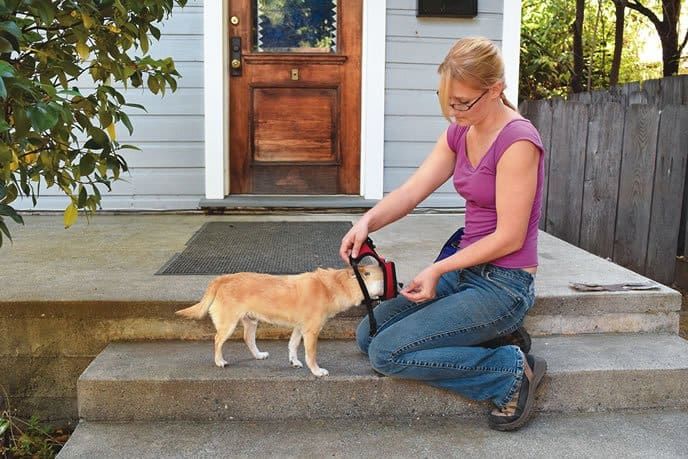Some behaviors don’t lend themselves well to a total choice approach, but you may be able to use a Choice/Conditioning-hybrid procedure, still giving your dog some sense of control over his own world. Here’s one such procedure:
Classical Conditioning Approach
1. Hold up the harness in front of your dog with one hand; feed him a treat.
2. Let your dog sniff or nose-touch the harness; treat.
3. Let your dog sniff the harness and feed him treats through the opening that will go over his head.
4. Let him sniff the harness, and hold treats farther away so he has reach farther into the harness to eat them.
5. With his head through the harness, allow the harness to rest on his neck; treat.
6. Touch the straps that buckle; treat.
7. Move the straps that buckle; treat.
8. Touch the two sides of the buckle together; treat.
10. Snap the buckle closed; treat. (If your dog is sensitive to sounds, you might choose to counter-condition the sound of the buckle snapping closed first (or the Velcro sound of a Thundershirt), prior to and separate from the procedure of putting the harness or shirt on the dog).
Choice and Classical Conditioning
1. Shape your dog to walk into the harness suspended to give him access. (Click and treat as he offers to move incrementally farther into the suspended harness.)
2. When he is voluntarily moving into the harness, use classical conditioning Steps 6 through 10 above to complete the process.
Learn more about how to train your dog to accept being touched for basic husbandry chores.






